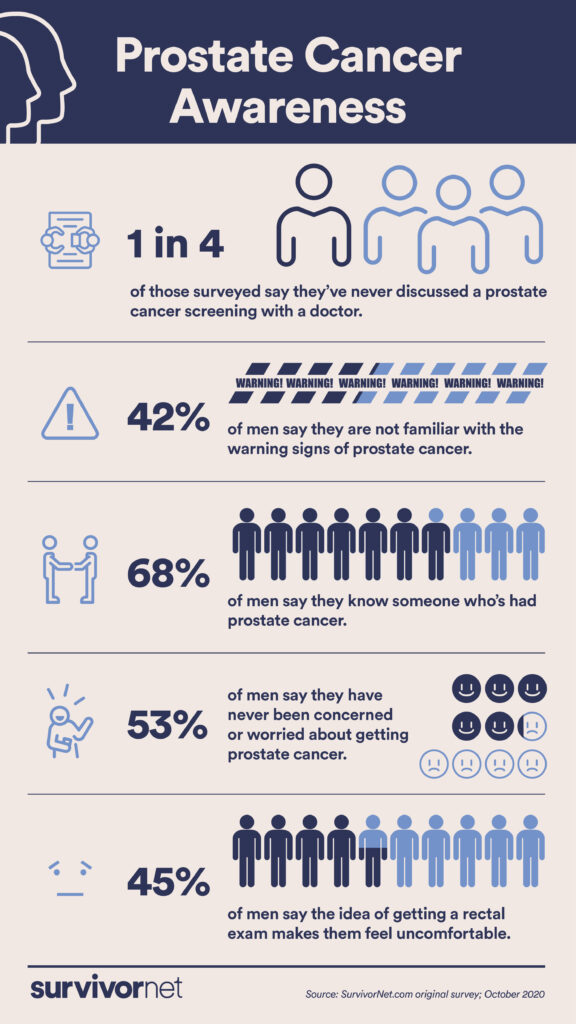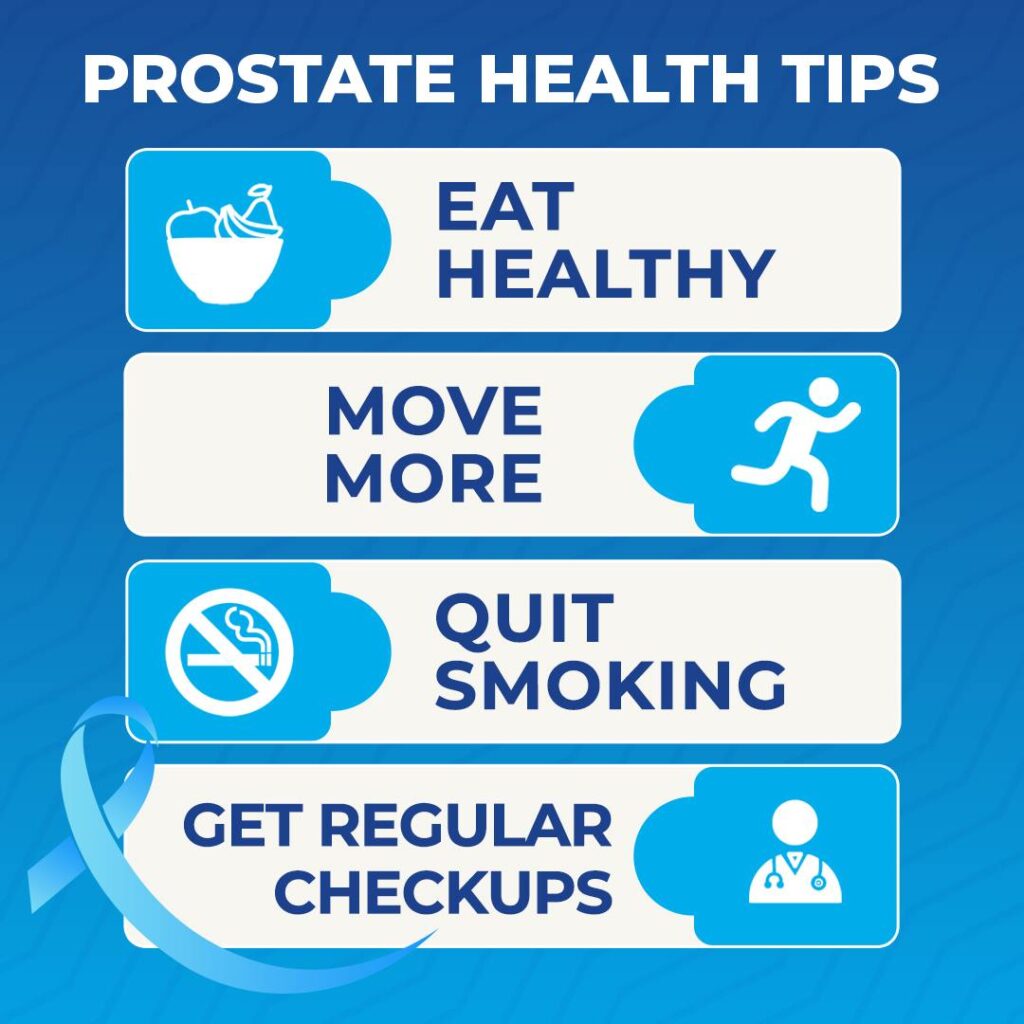By Samuel Pimping
As the third most prevalent type of cancer affecting 19.3% out of 100,000 Filipino men (Department of Health), prostate cancer is a grave illness. Its mortality rate has been on the rise the past few decades even though the outlook is generally positive for patients with this disease. This fact urgently calls for greater awareness among the masses. When discovered on time, there is an excellent survival rate for prostate cancer given the wide range of treatments. By letting people know the signs, causes, and methods of treatment and prevention, early diagnosis and intervention are more likely to happen.

There is no minute to spare. Spreading knowledge saves more lives than one would
think!
The prostate and its archnemesis
Every man has a prostate, which is a walnut-sized gland inside the groin that secretes part of his seminal fluid. It is important for reproductive purposes as it helps keep sperm healthy and transport semen via ejaculation. Prostate cancer is when abnormal cellular growth or malignant cells form in the prostate. Fortunately, this kind of cancer is known for progressing slowly in most cases. It is for this reason that it is usually diagnosed and treated before it spreads to other parts of the body. This spread, called metastasis, is the main cause of cancer morbidity and mortality.
When cancer cells spread to parts other than the originally affected site, it is said to have metastasized. Metastasis is dangerous; it is responsible for 90% of all cancer deaths. Prostate cancer, upon advancing, can spread to vital organs as far as the brain, lymph nodes, and lungs. While it is a serious sign that the patient’s condition has taken a turn for the worse, this phenomenon is not a death sentence.
Why, then, is the internal spread of cancer cells so dangerous? Imagine that our body is a machine. For any machine to work, there is an intricate web of wires, gears, pipes, and other moving parts that each play a critical role. Cancer cells are the dirt, waste, or obstructions that impair these parts. If it hinders enough of them, the machine becomes damaged to a point where it becomes beyond repair.
The prognosis on prostate cancer, which is the outlook on how the disease will progress, is highly promising upon timely diagnosis. This is why early detection is crucial. Treating the cancer before metastasis is the key to higher survivability.
There is such a thing as being “too early”
In advocating for early intervention, one might think, “To be safe, I will definitely visit my doctor once any symptoms of prostate cancer show up.” Take note that you could already have prostate cancer without even knowing it. Usually, no obvious symptoms show up until the late stages of prostate cancer as it is a slow-growing disease.
Even so, having yourself routinely screened (looking for cancer before any symptoms appear) is not recommended if you do not experience any difficulties or health problems. Why? Because some testing procedures also have their risks. In fact, it is normal for providers to refrain from extensive testing if the cancer is assessed to be non-aggressive.
A blood test can yield a false positive, which is a result saying that you have cancer when you actually do not. A biopsy, in which a tissue sample from your prostate is taken, may cause pain, bleeding, or infection. Also, some patients may excessively worry and seek immediate treatment even in the earliest stages. This would be all right if it were not for the fact that treatments (especially invasive ones) also pose possible side effect risks such as infertility and bladder or bowel issues from surgery or radiation therapy.
So, when should you get screened? It is best to consult a doctor first because unnecessarily frequent exposure to testing and treatment may pose some risks that are disproportionately high compared to the benefits. If you are more likely to suffer from prostate cancer due to risk factors such as old age and a family history of cancer, then testing becomes more recommendable.
In many instances, active surveillance after discovering the presence of prostate cancer is viable given its gradual progression. Routine tests begin after a confirmed diagnosis to check whenever the condition worsens significantly. This way, the patient can be ready for treatment once it is completely necessary and avoid excessive procedures during the early stages of the disease where no complications even arise.
When symptoms do show up, they usually manifest in bladder and ejaculation output. Urine flow that involuntarily starts and stops, painful urination and/or ejaculation, frequent urination at night, loss of bladder control, erectile dysfunction, and lower back pain are all signs that indicate that you may have prostate cancer.

Sometimes, symptoms might appear despite the absence of cancer. An enlarged prostate gland can be brought about by prostatitis—inflammation and swelling in the prostate often brought about by infection. Benign prostatic hyperplasia involves an increase in prostate size without any effect on cancer risk. Both conditions are non-cancerous.
Can women have prostate cancer? Females do not have a prostate gland. However, they do have Skene’s glands on the front side of the vagina. These somehow behave like a man’s prostate and have hence been known to be the female prostate. On extremely rare instances, when the Skene’s glands are afflicted by abnormal cell growth, women can be said to have “prostate cancer”. So, yes! Women can have it,
albeit hardly and differently.
Protect and preserve thy prostate
The likelihood of prostate cancer (or even any other illness, for that matter) can be substantially reduced by practicing a healthy lifestyle. Regularly exercising, completely avoiding smoking, controlling alcohol intake, and eating nutritiously are the best habits that protect against this type of cancer.

Who are most likely to have prostate cancer? Older men. Six out of ten instances of prostate cancer involve 40- to 65-year-old males or older. Other risk factors include smoking, eating a poor diet, being obese, living an unhealthy lifestyle, having close relatives that had prostate cancer, suffering from a sexually transmitted infection, and being of African descent.
The risk of getting prostate cancer increases with age. After 40 years old, incidence rates increase at a significantly higher pace. If you are within the older age group and have one or more risk factors, consider getting tested. Possible medical examinations for diagnosis include a digital rectal exam (DRE), prostate-specific antigen (PSA) blood test, biopsy, MRI, transrectal ultrasound (TRUS), and other imaging tests. DREs are when the doctor, while wearing a glove, inserts a lubricated finger through the anus to physically examine the prostate and note its size.

When you do get diagnosed with prostate cancer, remember that watchful waiting and active surveillance are valid choices for low-risk, non-aggressive instances. If your provider recommends active intervention instead, there are multiple ways to address it. Treatment can involve radiation therapy or chemotherapy to eliminate cancer cells at the expense of other healthy cells as collateral damage. Hormone therapy is another option based on the knowledge that certain hormones aggravate the development of prostate cancer. In this case, medication is taken by the patient to reduce such hormone levels. Finally, surgery is commonly the last resort as it requires the full removal of the prostate.
Other forms of therapy such as immunotherapy, where treatment is focused on strengthening the immune system to make it better equipped against cancer, and focal therapy, which emphasizes the elimination of tumors for low-risk cases, can be effective. However, these are not definitive options and are known to be experimental. Lastly, routine screening continues after treatment. This is to check the presence of cancer cells and ensure that any recurrence is consistently addressed as soon as
practicable.
Prostate cancer may be slow in growth, but it can rapidly become a problem when you are completely unaware! Spread the word—make healthier choices as early as now to enjoy your life to the fullest.
Sources:
Connor, E. (February 14, 2017). Can females get prostate cancer? https://www.healthline.com/health/women-health/female-prostate-cancer
McCarthy, A. (August 13, 2021). 50% of men aren’t concerned about prostate cancer & 40%
delayed doctor visits during covid-19 — Survivornet survey reveals astounding way men
ignore their health. https://www.survivornet.com/articles/survey-prostate-cancer- screening-men-dont-know-warning-signs-for-disease/
Prostate cancer. (January 17, 2023). Cleveland Clinic. https://my.clevelandclinic.org/health/diseases/8634-prostate-cancer#outlook–prognosis
Prostate cancer awareness. (August 23, 2022). Centers for disease control and prevention. https://www.cdc.gov/cancer/dcpc/resources/features/prostatecancer/index.htm
Prostate cancer awareness month: Sama-samang labanan, tamang impormasyon, kailangan!
(June 17, 2022). National nutrition council. https://nnc.gov.ph/regional- offices/mindanao/region-xi-davao-region/8146-prostate-cancer-awareness-month-sama-samang-labanan-tamang-impormasyon-kailangan
Seyfried, T. N., & Huysentruyt, L. C. (2013). On the origin of cancer metastasis. Critical reviews
in oncogenesis, 18(1-2), 43–73. https://doi.org/10.1615/critrevoncog.v18.i1-2.40








